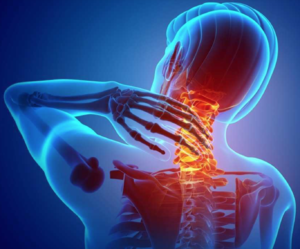Pain Self-Efficacy Questionnaire (PSEQ)
Original Editor - Andrew Humphreys, Brian Anderson, William Lawrence, and Logan Bartel as part of the Arkansas Colleges of Health Education School of Physical Therapy Musculoskeletal 1 Project
Top Contributors - Andrew Humphreys, Briana Anderson, William Lawrence, Kim Jackson, Logan Bartel, Lucinda hampton, Olajumoke Ogunleye, Aminat Abolade and Melissa Coetsee
Pain Self-Efficacy Explained[edit | edit source]
The Pain Self-Efficacy Questionnaire (PSEQ) is a 10-item questionnaire developed to assess the confidence people with ongoing pain have in performing activities while in pain.
Self-efficacy refers to the belief in one’s capabilities and the confidence in one’s abilities to organize, perform, and complete the courses of action required to achieve a particular behaviour or outcome [1]. A belief and personal conviction that one can effectively accomplish the desired outcome in each situation or context [2]. Self-Efficacy is a judgment of personal capability to successfully perform and complete a task.
Self-efficacy in individuals experiencing pain includes beliefs about their ability to control pain and the associated emotions, life and work activities, communicating their needs, and appropriately utilizing pain management strategies [3]. A belief about one’s confidence in coping abilities associated with the pain experience [4]. Pain self-efficacy can be measured by the Pain Self-Efficacy Questionnaire.
Guiding Principle of Pain Self Efficacy Questionnaire[edit | edit source]
- PSEQ is a self-reporting questionnaire
- PSEQ addresses the belief and confidence that patients with chronic pain have in achieving desired outcomes despite the pain
- Patients to take their pain into consideration
Intended Population[edit | edit source]
Chronic musculoskeletal disorders that include presence of pain
- idiopathic neck pain (INP)
- Whiplash-associated disorders (WADs)
- Headaches
- Neck pain disorders (NPD)
- Low back pain (LBP)
- Chronic low back pain (CLBP)
- Chronic non-specific low back pain
- Chronic disease states[6]
Validity and Reliability[edit | edit source]
Validity and Reliability.
The Pain Self-Efficacy Questionnaire (PSEQ) scrutinizes pain self-efficacy- Michael Nicholas [7] created and validated the questionnaire. The constructs that were measured included implicit knowledge and abilities to confidently maintain everyday activities, an explicit sense of confidence in one’s ability to motivate and mobilize the cognitive resources required to execute a skill, and the confidence in one’s ability to complete a specific task or required skill successfully in a specific context of pain. Individuals experiencing chronic pain and musculoskeletal disorders associated with pain are the focus population served by the PSEQ. The PSEQ was suitable for chronic pain patients in general [3]. The psychometric properties of the PSEQ demonstrated reliability, validity, and internal consistency with a Cronbach Alpha score of 0.92[7]. The theoretical construct and the clinical application of pain self-efficacy offered an empirical and practical premise for healthcare providers. The applicable construct of pain self-efficacy helped to develop interventions that concretely influenced behaviour that impacted the human and societal burden associated with chronic disease and pain[7].
The PSEQ contains ten questions that account for pain with the consideration of specific functional tasks. Each question item offers seven response categories on a numerical Likert scale that range from not at all confident to completely confident. The questions vary from specific tasks to general considerations of managing function requirements. For example, a specific inquiry is about the ability to do most household chores, despite the pain. Likewise, a general inquiry is about the ability to socialize with friends and family, despite the pain. The PSEQ allows patients to consider future outcomes as a reflection of their confidence. For example, the tenth question asks, “I can gradually become more active despite the pain?” The only question that represents a misfit between the questionnaire and the person with chronic pain is question 7, which asks, “I can cope with pain without medications[8].” The significance of this misfit question is the potential to identify someone with increased confidence in all other questions when they have pain medications. However, the totality of the PSEQ questions has acceptable measurement properties and accurately summarizes confidence scores in patients with chronic pain [8].
Responsiveness[edit | edit source]
The PSEQ responsiveness has been investigated by [6]. Its measurement property is based on population and context specificity. When assessed, the response probability rate was deemed satisfactory when 75% of the hypothesis standards were criteria-met, moderate when 50-75% were criteria-met, while poor to low hypothesis standards were indicated when only 50% or less of criteria were met [6].
Further research is necessary when evaluating the overall responsiveness of the PSEQ. Just like with addressing construct validity, responsiveness is also subject to discrepancies in comparing both perceived and actual results. Such discrepancies can be attributed to limited knowledge of construct validity, comparator measurements tool analysis, and the international assessments of the PSEQ scale based on various country interpretations.
Podcast and Research: Toward Understanding The Correlation of PSEQ and Other Psychosocial Factors In CLBP[edit | edit source]
https://bmcmusculoskeletdisord.biomedcentral.com/articles/10.1186/s12891-021-04955-6
The Pain Self Efficacy Questionnaire[edit | edit source]
https://aci.health.nsw.gov.au/__data/assets/pdf_file/0005/212909/PSEQ_Final.pdf
References[edit | edit source]
REFERENCES:
- ↑ Bandura A, Freeman WH, Lightsey R. Self-efficacy: The exercise of control.
- ↑ Okifuji A, Turk DC. Behavioral and cognitive–behavioural approaches to treating patients with chronic pain: thinking outside the pillbox. Journal of rational-emotive & cognitive-behaviour therapy. 2015 Sep;33(3):218-38.
- ↑ 3.0 3.1 Miles CL, Pincus T, Carnes D, Taylor SJ, Underwood M. Measuring pain self-efficacy. The Clinical journal of pain. 2011 Jun 1;27(5):461-70.
- ↑ Turk DC, Okifuji A. Psychological factors in chronic pain: evolution and revolution. Journal of consulting and clinical psychology. 2002 Jun;70(3):678.
- ↑ Hippocrates. [Hippo] What is pain self efficacy questionnaire?? [Internet]. Youtube; 2019 [cited 2022 Apr 13]. Available from: https://www.youtube.com/watch?v=cGNdNQhf71k
- ↑ 6.0 6.1 6.2 Chiarotto A, Falla D, Polli A, Monticone M. Validity and responsiveness of the pain self-efficacy questionnaire in patients with neck pain disorders. journal of orthopaedic & sports physical therapy. 2018 Mar;48(3):204-16.
- ↑ 7.0 7.1 7.2 Nicholas MK. The pain self-efficacy questionnaire: taking pain into account. European journal of pain. 2007 Feb 1;11(2):153-63.
- ↑ 8.0 8.1 Di Pietro F, Catley MJ, McAuley JH, Parkitny L, Maher CG, Costa LD, Macedo LG, Williams CM, Moseley GL. Rasch analysis supports the use of the pain self-efficacy questionnaire. Physical therapy. 2014 Jan 1;94(1):91-100.









